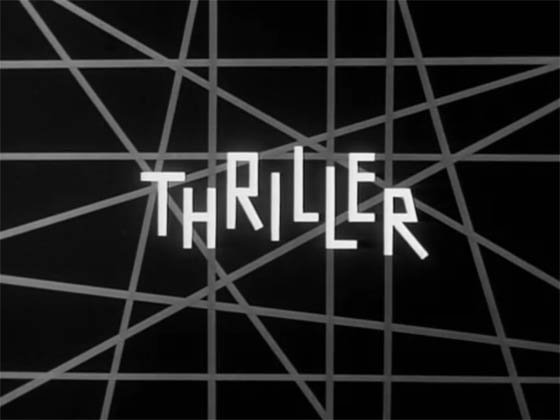
“Well, welcome to the fabled South!”
A car is lodged in the mud, between thickly-overgrown trees as night is starting to fall. Out of the vehicle step two young friends, Tim (Brandon DeWilde) and John (David Whorf). Newly stranded, they crack jokes and gradually wander down the road to a clearing, where awaits a dilapidated plantation manor. The site has been abandoned except for hundreds of cooing pigeons. As John approaches the door, the pigeons attack him before finally scattering. It’s almost as though they’re warning him away. The boys decide to spend the night anyhow. Our host, Boris Karloff, appears in a suit and tie, standing somewhere off in the swamps. With a dire expression, he tells us that the name of tonight’s tale is “Pigeons from Hell.”
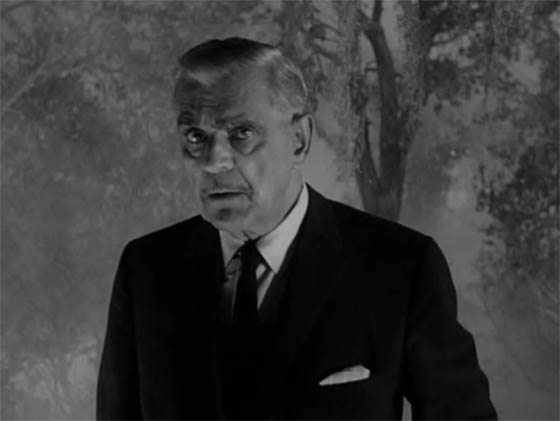
What a creepy kick it must have been to encounter this particular episode of the anthology series Thriller when it first aired, in 1961. Based on the classic “Pigeons from Hell” horror story by one of pulp fiction’s master storytellers, Robert E. Howard (it was written in 1934, and finally published in Weird Tales in 1938, long after Howard had committed suicide), this hour of television cut much deeper than what the era’s airwaves typically transmitted. Once Karloff disappears from the screen, that welcoming hand releases you, and you’re on your own in the big dark mansion, where matters quickly become grim and subtly disturbing.
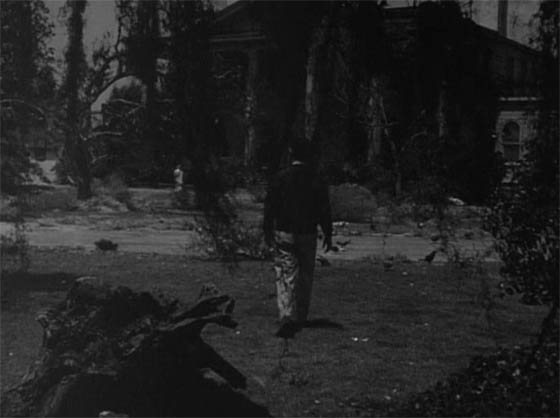
The manor appears to be empty, so the pair goes to sleep before the great big fireplace on the main floor. In the middle of the night, John suddenly rises, as though entranced, and begins to climb the grand staircase leading to the second floor. On the soundtrack, the cooing of the pigeons rises, and a female voice operatically swoons. Something very bad is happening; we know that much. Down below, Tim awakens to find himself alone. He calls out for his friend Johnny. He starts to climb the staircase. Then, suddenly, mayhem – and a nation’s worth of parents would spend the rest of the evening trying to quiet the screams of their traumatized kids. Here’s the scene as it plays:
Okay, so what’s just happened? Well, Tim runs out of the house, manages to find the local sheriff, called Buckner (Crahan Denton), and through his hysteria describes what he saw of his friend: “I saw him, his head was smashed, but he was walking with a hatchet in his hand…his head was split!” Johnny was dead, but he came back to life – and tried to kill his best friend. The sheriff can only think that the kids found themselves in the old Blassenville estate, which hasn’t been lived in for years…though there are stories… He drags Tim back to the place to check it out.
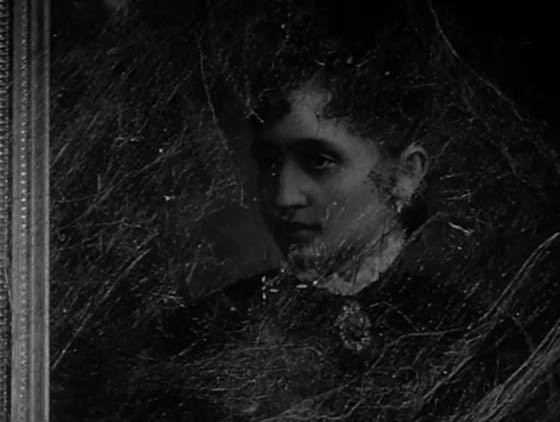
The trouble with haunted house stories is that the storyteller has to find some reason to keep his cast of characters inside that house – even if the house is obviously trying to kill them. Some of our classic haunted house films have found clever ways around this problem (see: The House on Haunted Hill, The Haunting, The Legend of Hell House, etc.); I don’t know that Howard necessarily did when he wrote “Pigeons from Hell.” It makes as much fractured sense in the television adaptation: once Sheriff Buckner takes Tim back to the Blassenville house, and uncovers evidence to support Tim’s story – including John’s body with a nasty gash through the head; the place at the top of the landing where John sank his bloody hatchet into the wall; a pool of blood some paces before that, where John presumably got his; and, most unnervingly, the room from which Johnny had emerged, which has such an evil vibe that Buckner’s lantern goes out for just the length of time that they’re inside – Buckner suggests that they spend the night. You see, they can’t go back now, as no court will believe Tim didn’t kill his friend. But Buckner knows there’s something wrong about this Blassenville house, so why not stick around to see what weird thing happens next? Presuming, of course, that it helps them find the real killer, and not just get the both of them axed.
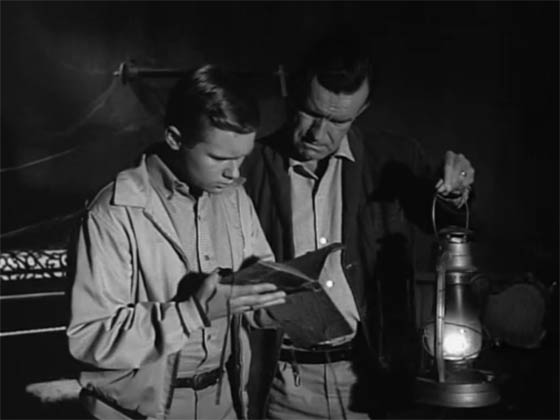
Buckner tells the story of those who the Blassenvilles, who ruled the plantation with an iron fist. They abused the (black) servants: “They had a mean streak in ’em.” But one day, some fifty years ago, the help deserted them, and, one-by-one, the Blassenville sisters vanished. Inside the house Buckner and Tim find a diary from Elizabeth Blassenville, who claims her two sisters were murdered. She writes of fearing for her life from someone, or something, living inside the house: “Often at night I hear a fumbling at the door. I dare not open it.” Elizabeth, too, would soon go missing. Buckner suggests they go talk to one of the last survivors of the plantation, “Old Jacob,” who now lives out in the swamps. Jacob confesses that he taught the art of creating zuvembies (zombies) to one Eula Lee. Buckner fills in the rest: Eula Lee was one of the servants. No, insists Jacob. Eula Lee was a Blassenville, but of a different father.

Yes, there are racial politics going on here, though the teleplay by John Kneubuhl steps delicately, and also alters plot-points and character motivations from Howard’s original tale. Though it’s never explicitly stated, this we can tell from a close reading of Thriller‘s “Pigeons from Hell”: the mother of the three Blassenville sisters also had a mixed-race child – Eula Lee. Possibly the father was one of their workers or servants. To pay them back for their treatment of the black men and women of the plantation, Eula Lee revenged herself upon the brutal Blassenville sisters by killing them with zuvembies. (Where do the pigeons fit in? It’s suggested in passing that they are the souls of the plantation’s dead.) After Jacob finishes his reluctant confession, he is himself killed by a poisonous snake, which leaps out of the fireplace to bite him. Tim suggests that Eula Lee is behind it – still alive, practicing voodoo, possibly a zuvembie herself – but Buckner only expresses rage and frustration. Nevertheless, he drags them back to the house to explore it further, and find any trace of Eula Lee.
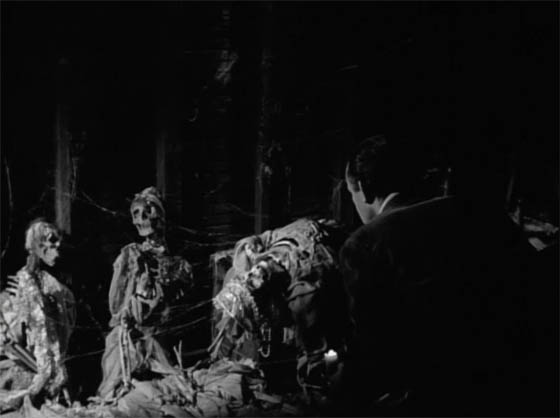
The final revelation, altered from Howard’s version, underlines this “Pigeons from Hell” as a story about the brutality of the Old South. Howard’s original tale makes explicit that the African-American workers on the Blassenville plantation were whipped and beaten savagely; though Kneubuhl mutes some of these details, and leaves others for the viewers to assume, he also removes some of the story’s unwelcome baggage, borne by Howard’s own (now outdated and unfortunate) racial theories. Thus, the Thriller telling is leaner, meaner, and pointed. The Blassenville plantation endured beyond the Civil War as a continuing example of Southern degradation of blacks by whites. Eula Lee, mixed-race and thus the Blassenville’s dirty little secret, is the ideal vessel of revenge against the sisters. That she uses voodoo places the story in a long tradition of genre fiction in which displaced Africans use the magic of their ancestors to avenge themselves upon their tormentors. Director John Newland guides the climax with the same steady, eerie hand as he lent the forty or so minutes which preceded it. Those children who convinced their parents to keep the TV on through to the very end would be rewarded with some restless nights staring into the shadows of their bedrooms or hiding under the sheets. But for the adult looking for a richer ghost story, it’s the subtext, the secrets so unsuccessfully locked away in the closets and hidden rooms of the Blassenville estate, which makes this episode so particularly haunting.
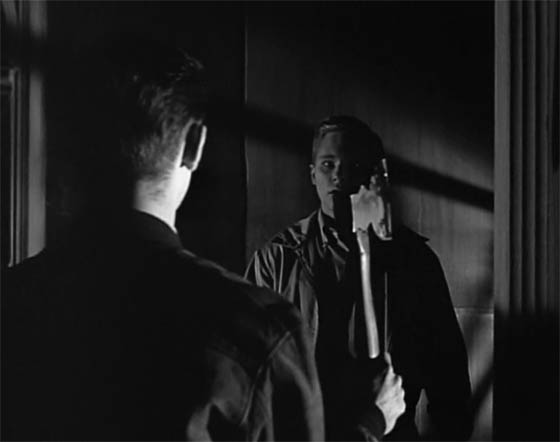
Horror scribe Joe R. Lansdale wrote a Pigeons from Hell miniseries for Dark Horse Comics a few years ago, a sort-of-sequel with black protagonists exploring the Blassenville estate and encountering hatchet-wielding zuvembies. It’s part of a number of Robert E. Howard-based comics Dark Horse has published (including Conan and Solomon Kane), which started a renaissance of R.E.H. interest about a decade ago; subsequently the vast bulk of his short stories are finally back in print, after a long absence. The Karloff-hosted Thriller series is available on DVD and, at the moment, from Netflix’s instant streaming service.









